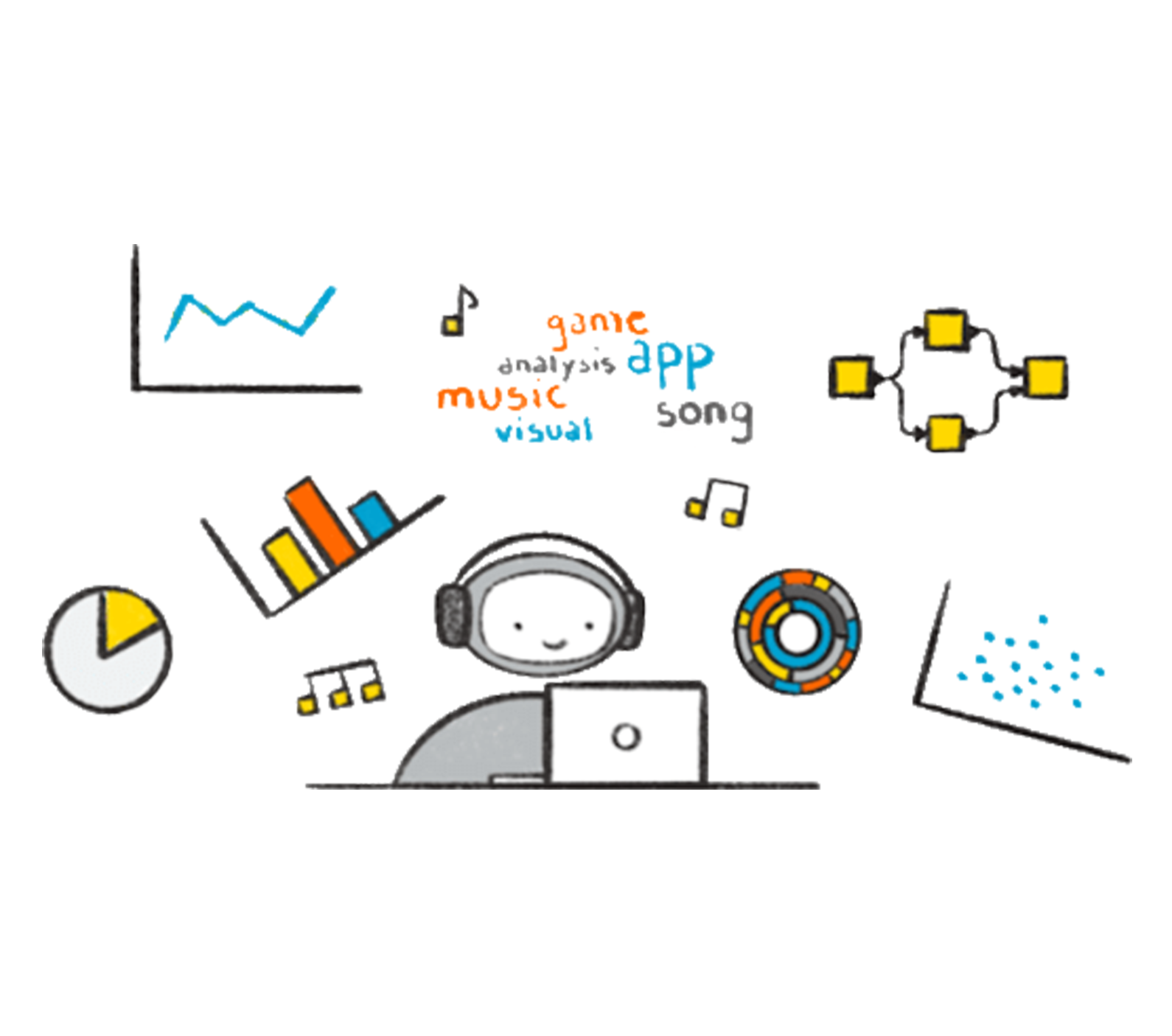Data science is a fast evolving field. Every few years new algorithms and new techniques catch the attention of data scientists and progress the whole field one step further, while previous knowledge gets consolidated and becomes part of the “state of the art”. Considering how fast the field evolves, how large the pool of “state of the art” knowledge is, and how often new algorithms sprout from existing techniques, we are convinced that data science is now ready to enter high schools.
High school students are bright and fast learning, ready to absorb new concepts. The expanding digitization of processes and operations will surely place them in front of data at some point in their careers. To prepare them for the challenges of their future jobs, it is best to start with data early on.
With this idea in mind, we developed a five-day data science bootcamp for teenagers.
The 5-day data science bootcamp for high school students
The focus of the bootcamp was to walk teenagers into the world of data science. As a low-code, no-code data science tool, KNIME Analytics Platform allows students to enter this world much faster than a code-based tool.
The user-friendliness of KNIME makes it easier to start thinking about the challenge they have to solve rightaway. With no programming language to learn first, students can start building the data science solution immediately, and become familiar with basic to advanced data science techniques while they build their solution.
As an open source platform, KNIME is free of charge, lowering the barrier even further for teachers to bring data science into their classrooms for their students.
Once they [the students] understand it and fall in love with it, they might be actually willing to dive down, under the hood, and really learn the more advanced skills.
Wendy Guan, Executive Director of Center of Geographic Analysis, Harvard University
Teens crunch data to build a game data app
Music, gaming, and making the world a better place are the topics they were passionate about. And getting instant results motivates: Dwelling too much on math theory in sight of a hands-on project later on, can be counterproductive. Gamification is a great way to learn. So we combined music and games with hands-on projects for this boot camp.
The task: Teams of 3-4 students were given the challenge to build a game data app, where players guess a song from a word cloud made up of its lyrics. Some basic statistics are then calculated on the data from the playback sessions. The teams with the best projects are rewarded with … Spotify vouchers, of course!
The course was organized to run over five days. Each day included some theory lesson and plenty of time for the implementation of the game data app.
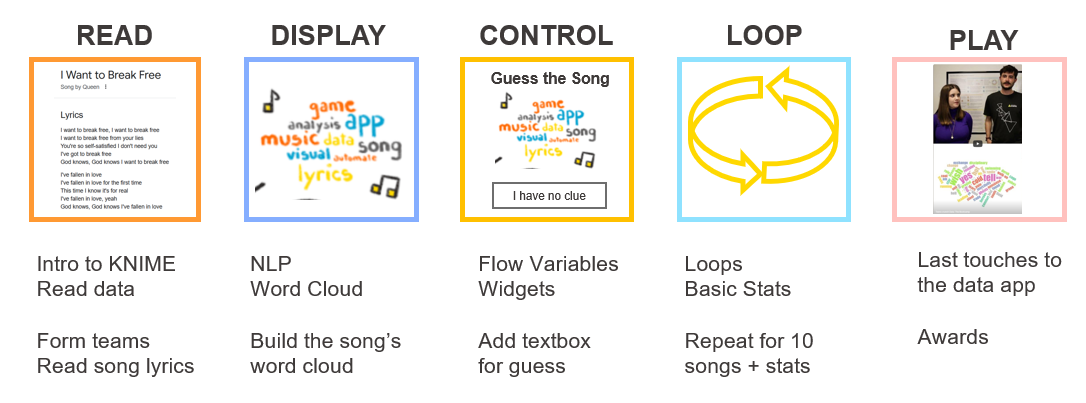
Tip: Access the materials for the Teens Crunch Data bootcamp free of charge, to run your own.
The pilot bootcamp
Before rolling out the program on a bigger scale, we ran it at a local school. This allowed us to refine the content, adapt it for the younger audience, and correct any potential pitfalls.
We ran our first hands-on data analytics and statistics bootcamp at the end of July 2023 at the high school Eichendorff Realschule in Gottmadingen, South Germany. The course had to be reduced from five to four days, due to pre-existing engagements. This required customization, however, was easy to achieve - we reduced and merged the programs of day two (DISPLAY) and day three (CONTROL) into just one day.
14 students took part, all of whom had little to no data science knowledge and no prior coding experience. Despite that, all teams managed to build a fully functioning data app for the “Guess the Song” game. Throughout the course, students were introduced to the key principles of statistics and data handling. The winning data app was selected based on a combination of technical and visual criteria, as well as workflow organization.
On the left, the winning “Guess the Song” data app. Built in four days by a 3 student team with no programming or coding experience. On the right, the winning team (image shared with permission).
Besides a few road bumps, including the German language, the bootcamp was very well received and the students had a fun week putting their new learnings directly into action, with a tangible result after just a few days. Some also hinted that they have ideas for how they might continue working on enhancing their data app.
Some students mentioned that they “didn’t like listening to the explanation of the new material” (let’s be honest - who does?). As an intuitive tool, KNIME Analytics Platform doesn’t require much explanation. So all explanations were primarily about data science theory concepts.
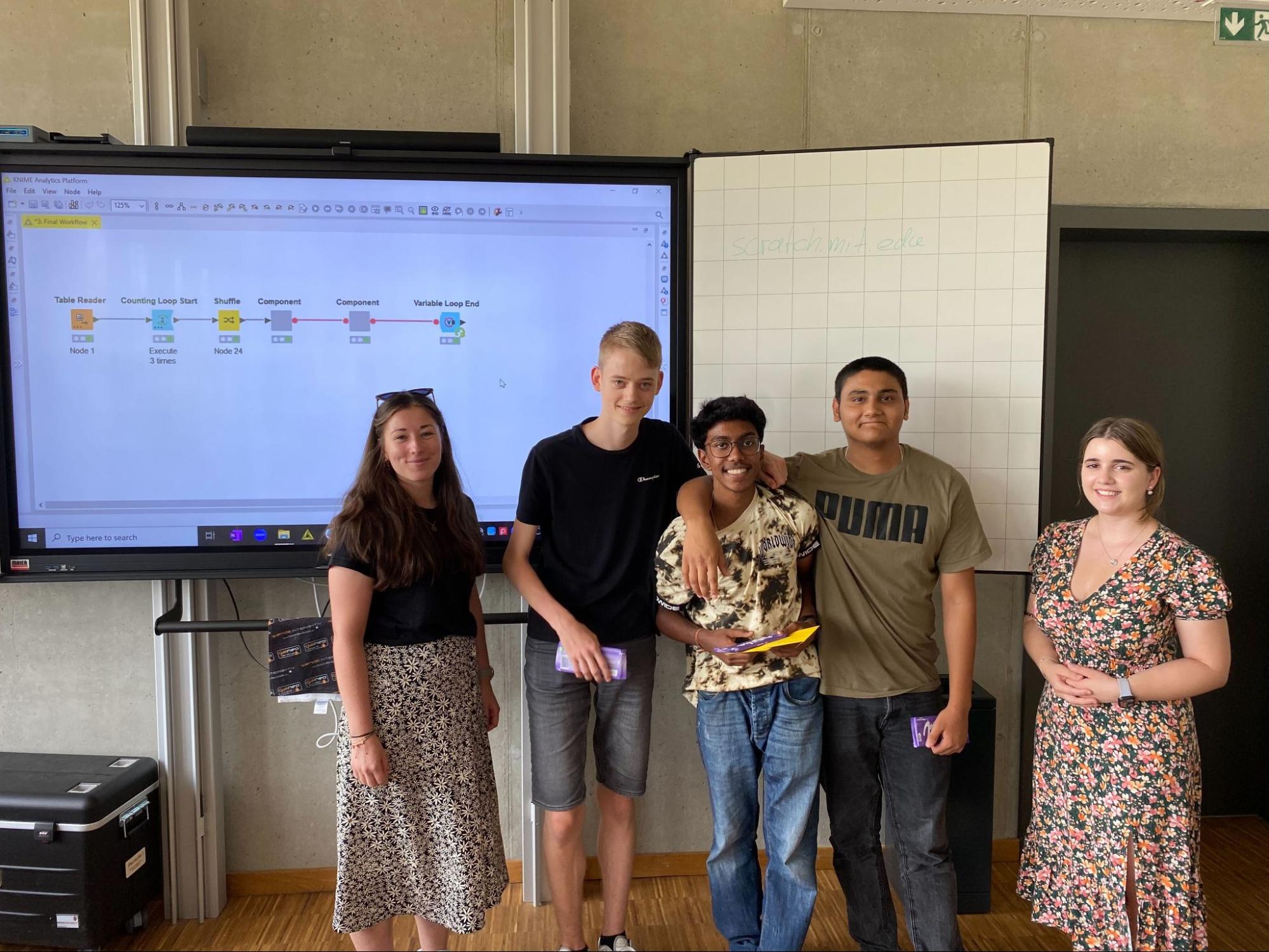
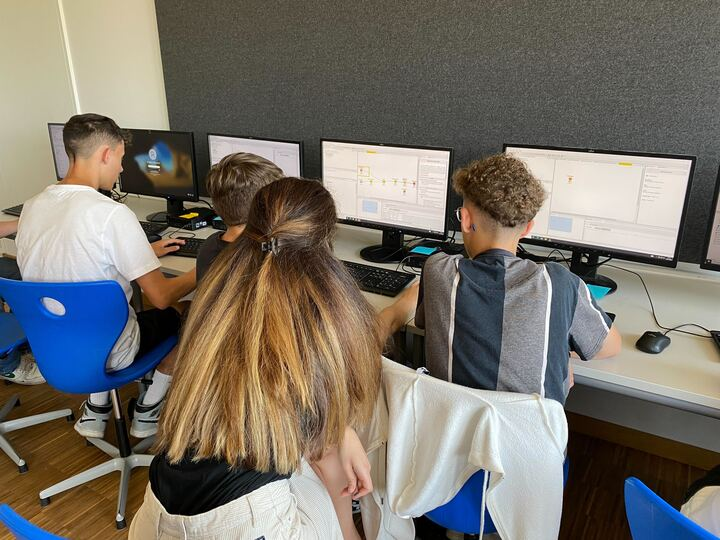
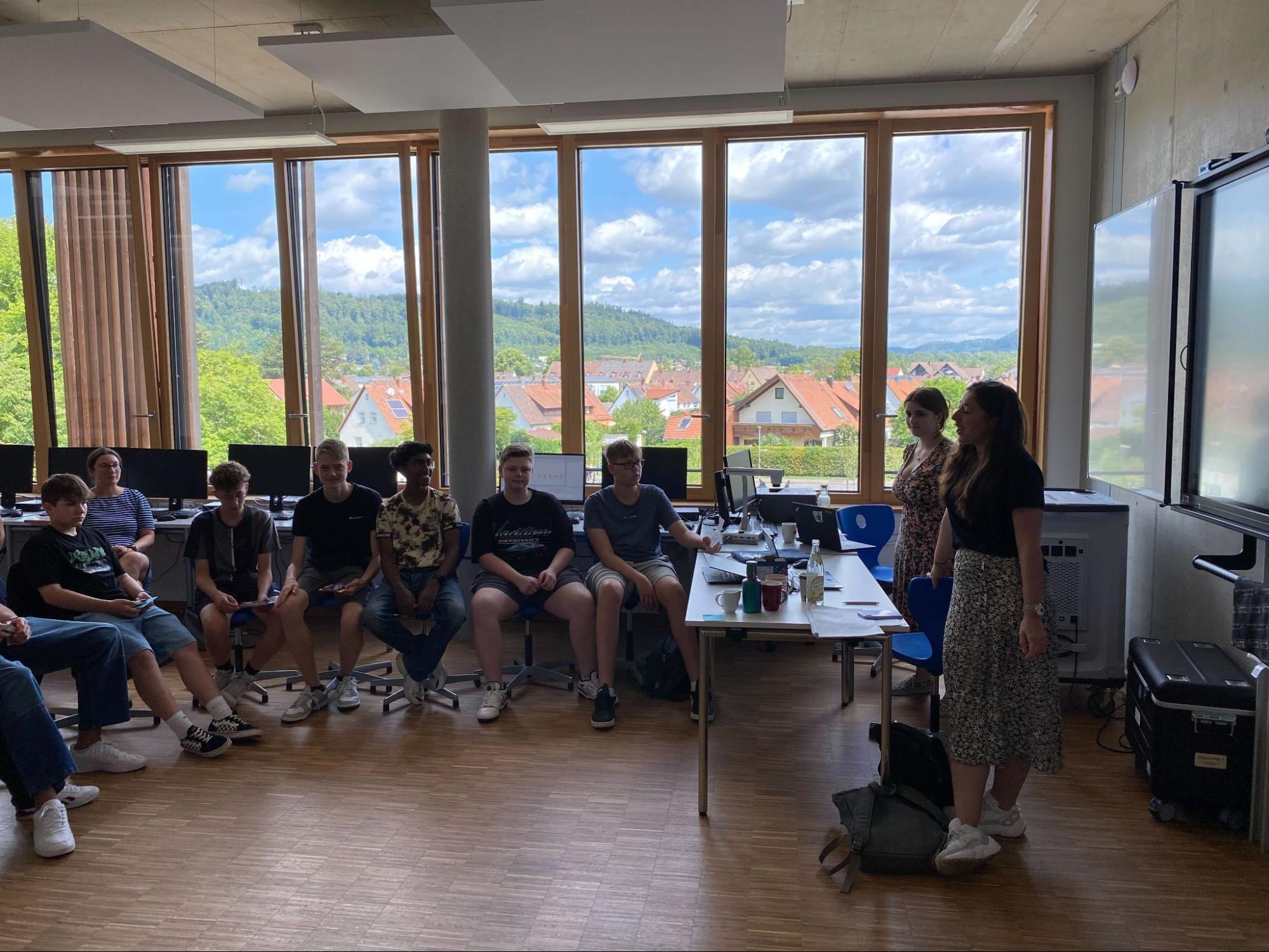
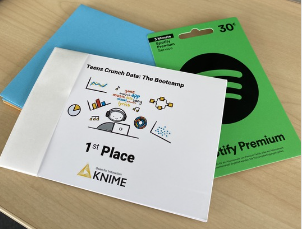
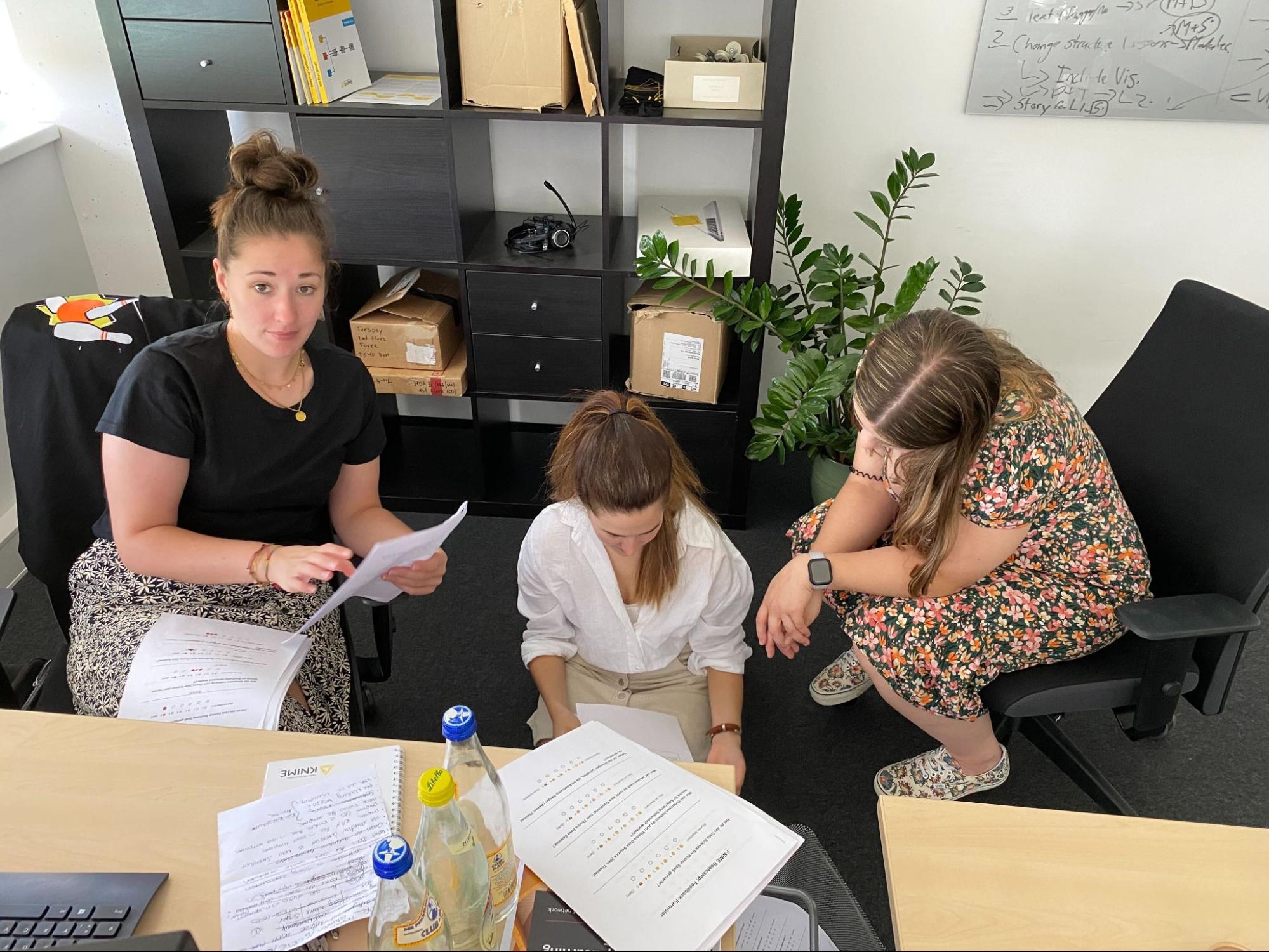
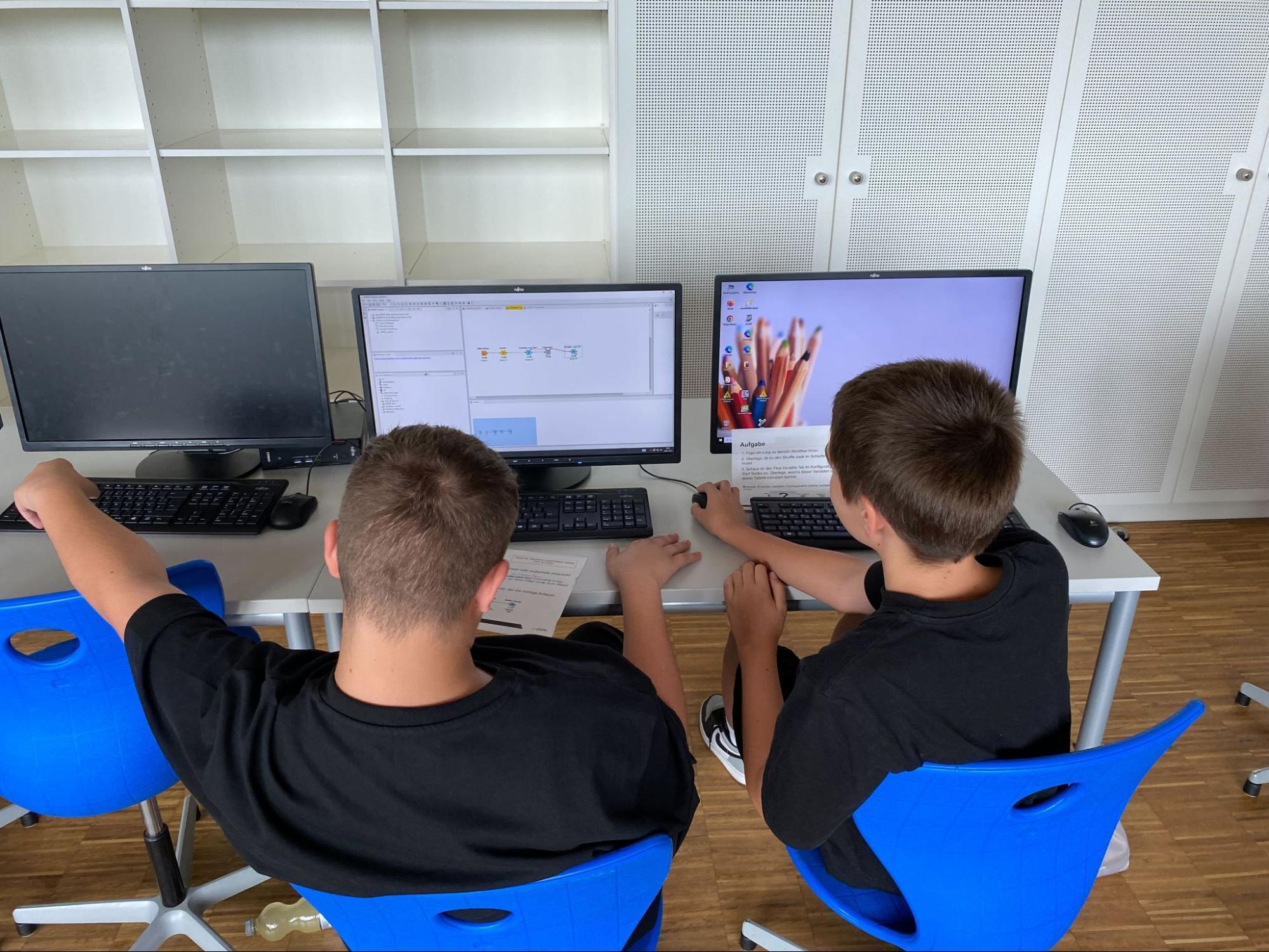
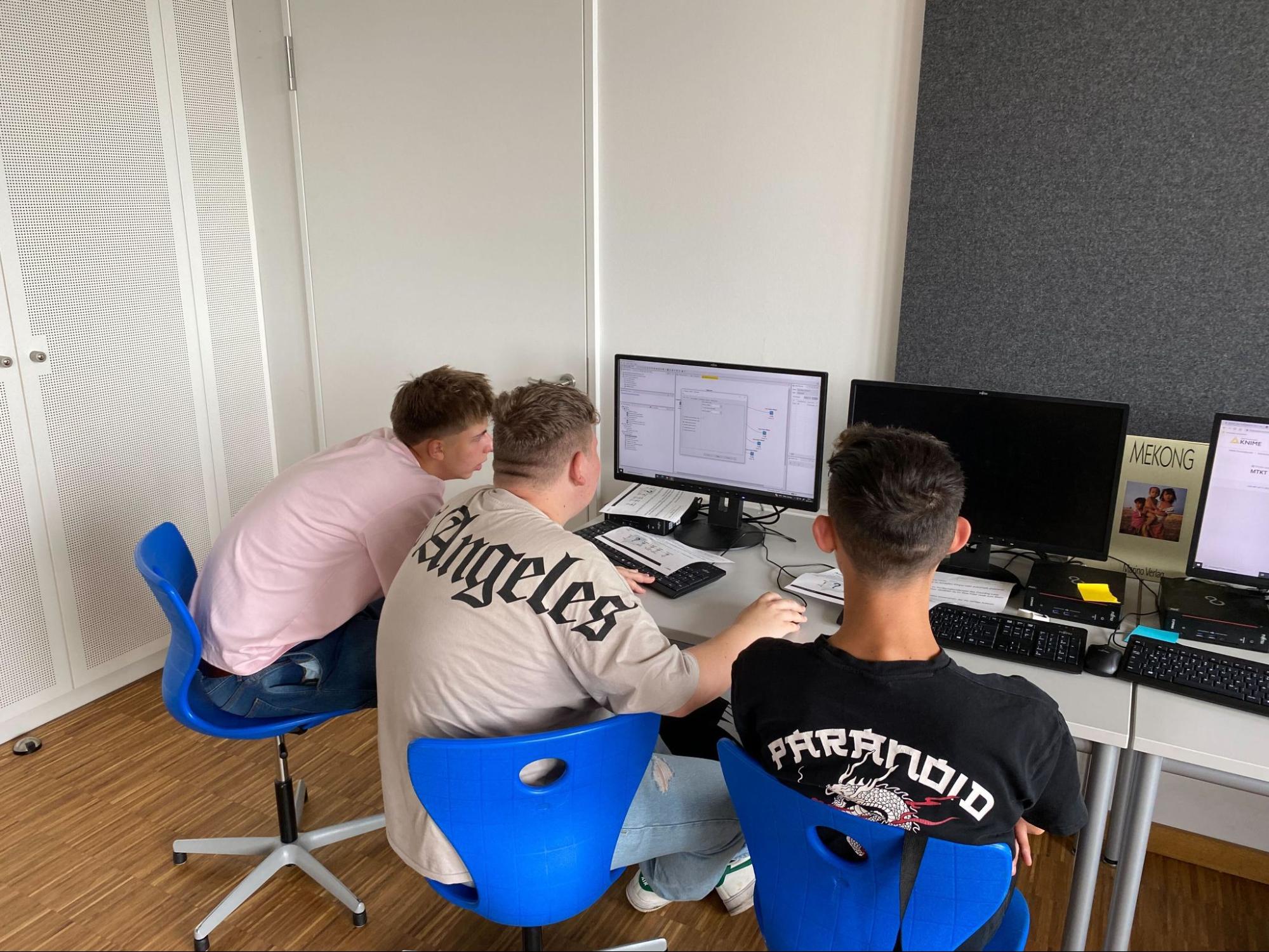
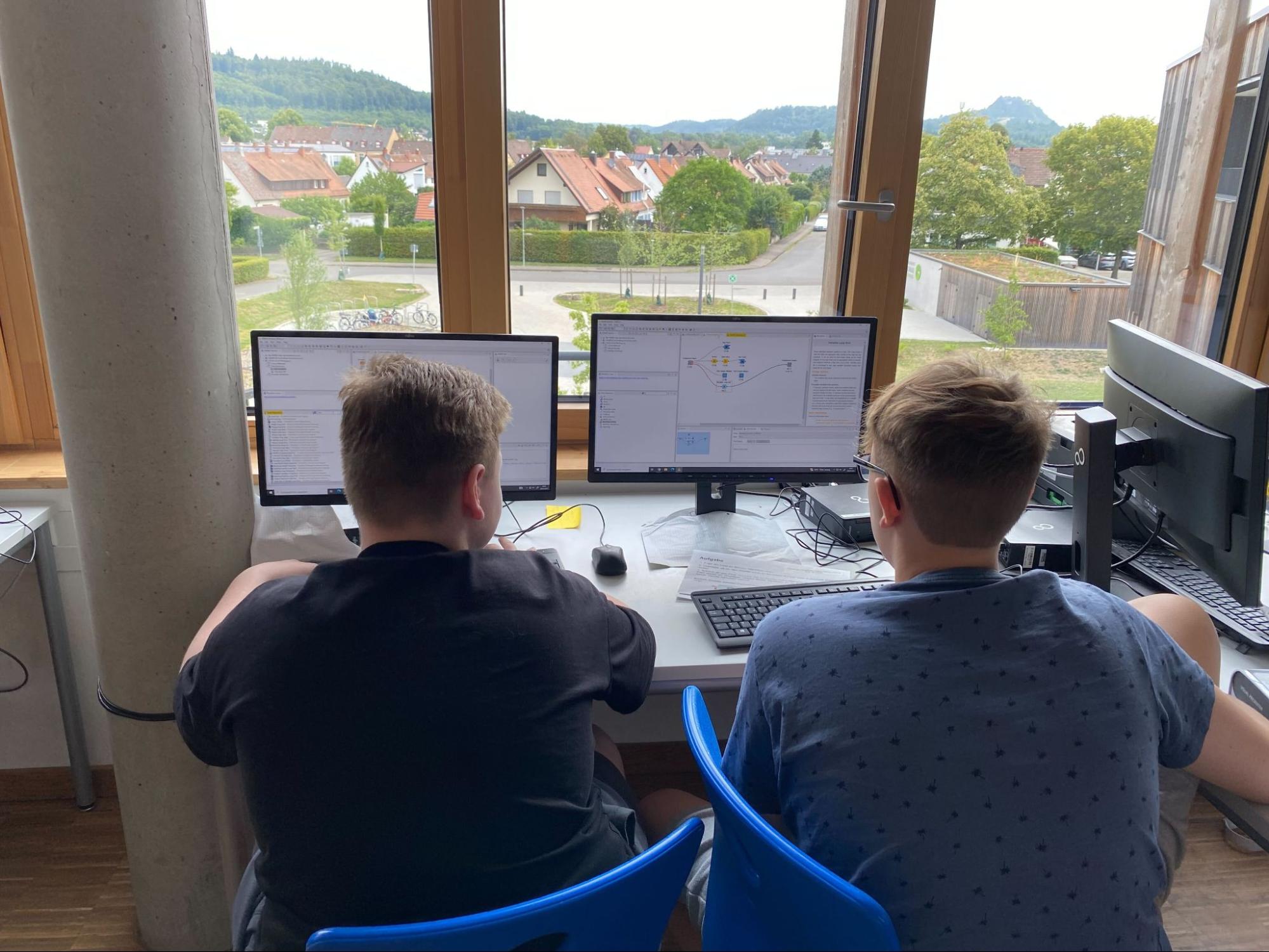
Ready for high school?
The pilot allowed us to tailor the content better for the new young audience and, most importantly, confirmed that data science is now ready to enter high school. Of course, with suitable content, that can be easily assimilated by teenagers.
The bootcamp material forms a well–structured, easily customizable program that logically moves through each required step of the data science process. This could be easily integrated into existing courses at any educational level.
The Teens Crunch Data bootcamp has highlighted how accessible data science has become with a tool like KNIME Analytics Platform. Users – in this case high school students – with no analytics background, no coding experience, and no domain expertise were able to build a functional data app in just a few days.
Based on the success of the pilot project, it’s ready for high school! We’re already considering similar bootcamps and partnerships for the future.
Low-code, no-code for accessible (and fun) data science
"Teens crunch data" shows how low-code is much more than a substitute for a traditional programming language. The accessibility of data science through the user-friendliness of the tool will help get more young people excited about data science and prepare them for the challenges of their future jobs.
Become a member of the KNIME Educators Alliance to join a community of educators and researchers empowering a new generation of data professionals and get access to teaching materials, educational kits, and more. Contact us for more information.
